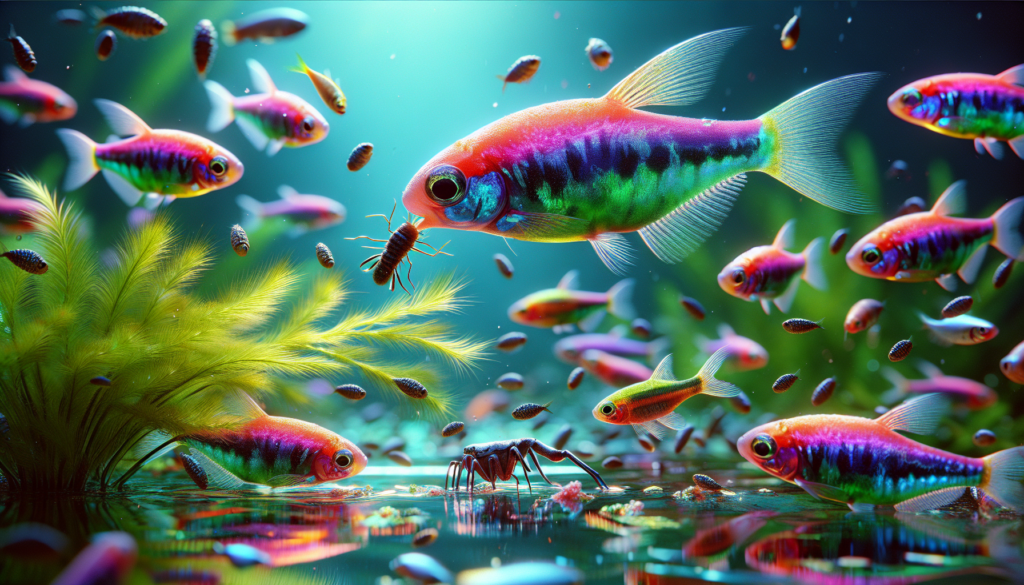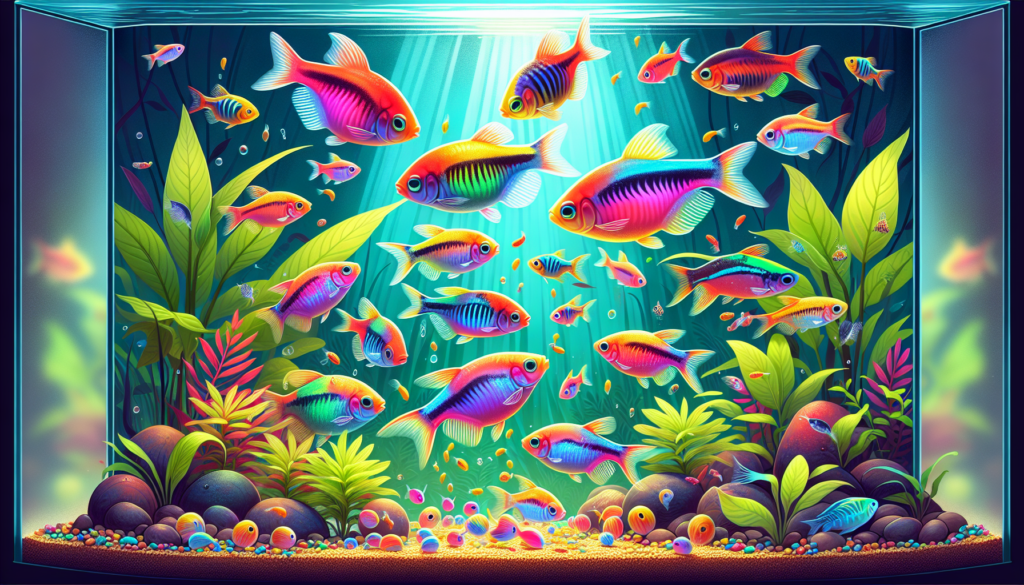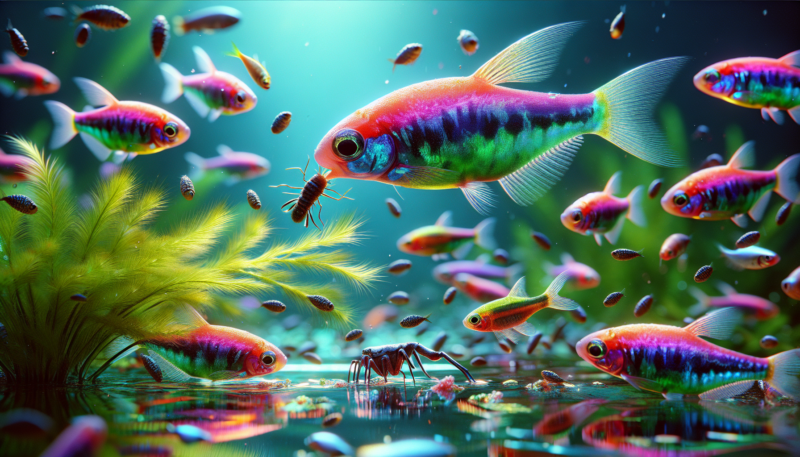If you’ve recently welcomed a shoal of vibrant neon tetras into your aquarium, you may find yourself thinking, “What do neon tetras eat?” In this guide, we will explore the feeding habits of these captivating fish, shedding light on their dietary needs and preferences. From their favorite food options to the frequency and quantity of their meals, we will provide you with valuable insights to ensure your neon tetras stay healthy, happy, and well-nourished. So, let’s dive into the world of neon tetra feeding habits and discover how to keep these tiny aquatic wonders satisfied.
Neon Tetra Feeding Habits
Neon Tetras, known for their vibrant colors and peaceful nature, are a popular choice for many aquarium enthusiasts. One key aspect of their care is ensuring they receive the proper diet. In this article, we will discuss the feeding habits of Neon Tetras, including their natural diet in the wild, their dietary requirements in home aquariums, and tips for feeding them.
Natural Diet in the Wild
In their natural habitat, Neon Tetras primarily feed on small insects, larvae, and organic matter found on the water’s surface. They have a preference for live food, as it mimics their diet in the wild. Their small mouths are designed to consume tiny organisms, making them well-suited for picking off prey from the water’s surface.
Dietary Requirements in Home Aquariums
When keeping Neon Tetras in a home aquarium, it is crucial to replicate their natural diet as closely as possible. While they may readily accept commercial fish food, it is important to diversify their diet to ensure they receive all the essential nutrients they need to thrive. A varied diet can help prevent nutritional deficiencies and boost their overall health.

Frequency of Feeding
Neon Tetras are small fish with high metabolic rates, which means they need to be fed multiple times a day. It is recommended to feed them two to three times a day in small portions. By spreading out their meals throughout the day, you provide them with a constant source of nourishment, mimicking their feeding habits in the wild.
Determining the Right Amount of Food
One of the challenges when feeding Neon Tetras is determining the appropriate amount of food. Overfeeding can lead to various health issues such as obesity and poor water quality, while underfeeding can result in malnutrition and stunted growth. As a general guideline, feed them an amount that they can consume within two to three minutes. Observing their feeding behavior can help you gauge the right portion size.

Commercial Food Options
There is a wide variety of commercial fish food available for Neon Tetras, including flakes, pellets, and granules. Look for high-quality food that contains a balanced blend of protein, fats, and carbohydrates. It is advisable to choose brands specifically formulated for small tropical fish like Neon Tetras. These foods are often enriched with essential vitamins and minerals, ensuring your fish get the nutrients they need.
Live Food Options
As mentioned earlier, Neon Tetras naturally prefer live food. Incorporating live food into their diet not only provides essential nutrients but also stimulates their natural hunting instincts. Some suitable live food options include brine shrimp, daphnia, and mosquito larvae. You can find these organisms at your local fish store or consider cultivating them at home for a constant supply.
Frozen and Freeze-Dried Foods
If you’re unable to provide live food regularly, frozen or freeze-dried alternatives are excellent substitutes. These foods maintain much of the nutritional value and are convenient to keep on hand. Frozen foods such as bloodworms, daphnia, and brine shrimp are readily available and can be defrosted before feeding. Similarly, freeze-dried options like tubifex worms or mosquito larvae can be rehydrated using aquarium water.
Supplementing with Vegetables
While protein-rich foods are essential for Neon Tetras, it is also important to incorporate some vegetable matter into their diet. Some suitable options include blanched spinach, lettuce, and peas. These vegetables provide fiber and essential vitamins, enhancing the overall nutritional value of their diet. Make sure to remove any uneaten vegetable matter after feeding to prevent water quality issues.
Feeding Techniques
When feeding Neon Tetras, it is essential to ensure the food reaches all individuals in the tank. These fish are rather small and can easily be outcompeted for food by larger or more aggressive tankmates. You can employ certain feeding techniques to ensure everyone gets their fair share. For example, using a feeding ring or feeding them in a specific area of the tank can help control the food distribution.
Tips for Feeding Neon Tetras
Here are some additional tips for feeding Neon Tetras:
-
Observe their feeding behavior to ensure they are consuming the food promptly. If you notice any hesitation or lack of appetite, it could be a sign of underlying health issues.
-
Avoid overfeeding. Over time, excess food can lead to poor water quality and various health problems for your fish. Remember to remove any uneaten food after feeding.
-
Consider rotating their diet. Providing a variety of food options will not only keep them interested but also provide a more balanced nutritional profile.
-
Always check the expiration dates on commercial fish food to ensure its freshness and avoid feeding stale or spoiled food.
By following these tips and providing a balanced diet, you can ensure that your Neon Tetras thrive and showcase their beautiful colors and energetic nature in your aquarium.
